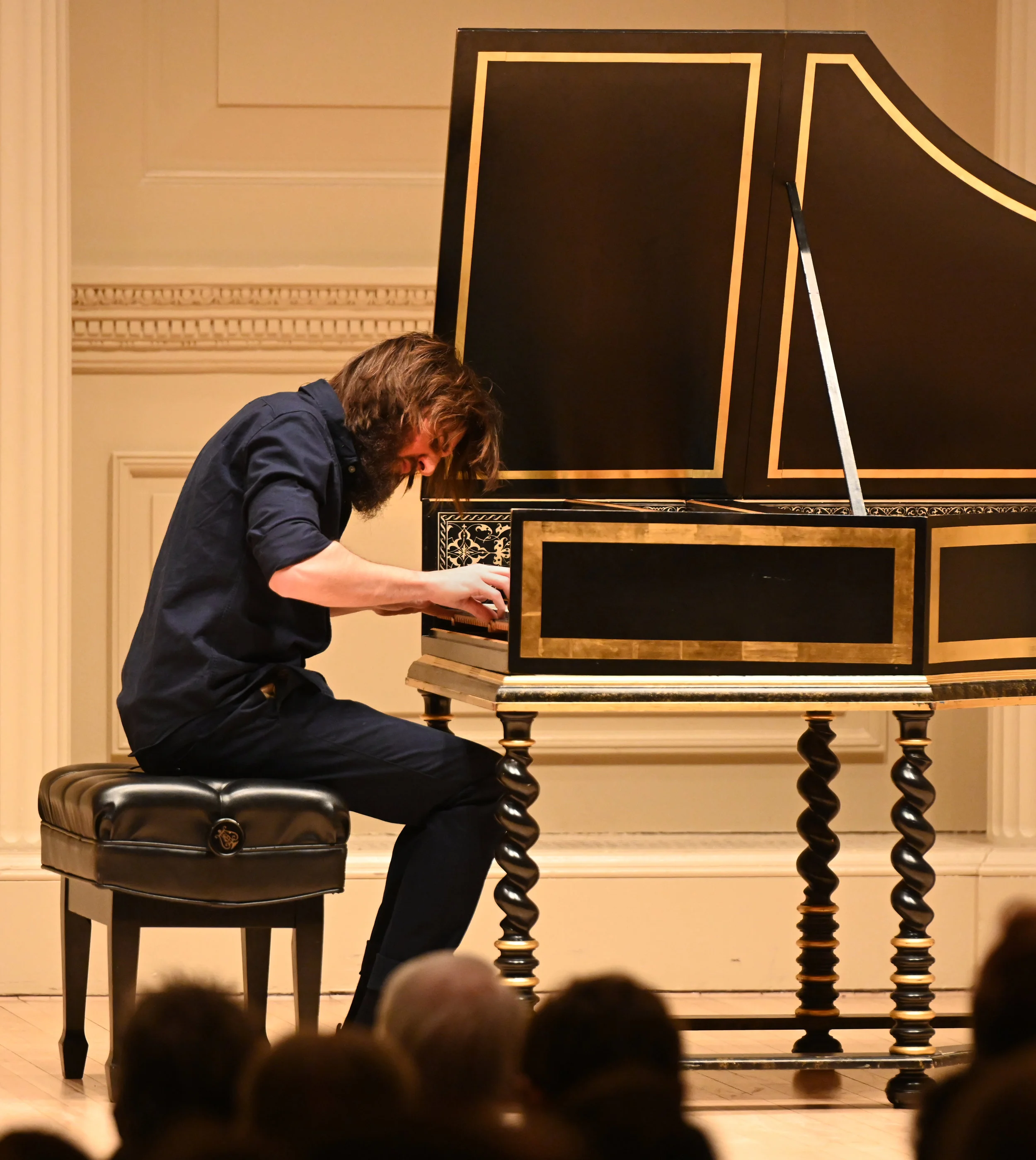REVIEW: Ian Hobson Breezes Through a Heavy Program
Above: Ian Hobson. (Photo by Hyeyeon Jung.)
MARCH 10, 2019
BY BRIAN TAYLOR
Ian Hobson, a concert pianist of admirable technique and unimpeachable taste, commanded the stage of Zankel Hall on Monday night with a mammoth sized program of romantic repertoire.
Opening the evening with Beethoven’s two-movement Sonata No. 27 in E Minor, Op. 90, Mr. Hobson embodied the qualities that characterize the great composer’s output of this period anticipating his “late” works: a restlessness, a sense of urgent self-reflection, and in the second movement, a Schubertian lyrical abandon.
Felix Mendelssohn’s Variations sérieuses, Op. 54, was composed in 1841 to raise money for the construction of a statue of Beethoven, and also serves as musical tribute to him, in its very Beethovenesque treatment of the theme. Mr. Hobson brought great drive to the machinations through which Mendelssohn puts his theme. The contemplative fourteenth variation, a restrained adagio, was deeply felt. The fire and fury that builds to the end burned brightly, as Mr. Hobson seemed to enjoy Mendelssohn’s well-crafted, idiomatic writing for the instrument.
Fleshing out the program’s first half with Robert Schumann’s Sonata No. 2 in G Minor, Op. 22, Mr. Hobson proved his mastery of the instrument, devouring page after page thick with sixteenth-notes, with whirlwind phrasing. However, the effect is often that we hear hours of practicing on display, rather than a freedom to interpret the music in the moment. It’s not that the pianist is a show-off. But, he has a tendency to reduce the music to its grandest, most essential gestures, perhaps at the expense of really listening to the details.
Ernst von Dohnányi’s Rhapsody in C Major, Op. 11 No. 3, something of a rarity on today’s stages, was one of the evening’s high points. Mr. Hobson is a professor at Florida State University, where Dohnányi, an early twentieth century Hungarian composer and pianist, spent his later years. (His American Rhapsody for orchestra is a tribute to his new home.) The rollicking Rhapsody that opened the second half of his recital is spicy and tuneful, and Mr. Hobson’s sweep and forward thrust serves it well.
The world premiere of Robert Chumbley’s new piano piece, Brahmsiana II, followed. Inspired by Brahms’s Op. 117 character pieces, the composer’s program notes indicated that he wanted the piano to sing the way Brahms’s music accomplished. Indeed, he succeeded in writing music that recalled the texture of Brahms’s. I could quibble that Chumbley’s piece is regressive and old-fashioned, while others will find it relatable and expressive. Either way, I found Mr. Hobson less persuasive here. The wind eluded his sails when reaching what seemed like an attempted sustained climax — Chumbley’s piano writing seemed workaday, rather than inspired.
The same, of course, cannot be said of Frédéric Chopin. Mr. Hobson wisely concluded his program with Chopin’s masterful Sonata No. 3 in B Minor, Op. 58, which never seems to grow stale. And he plays it splendidly, his ability to richly voice the melody amidst the accompaniment, and the ease with which he dispatched running passagework infused the sonata with newfound relevance. He earned an enthusiastic ovation, and treated us to two Rachmaninoff transcriptions (a heavenly Tchaikovsky lullaby, and a virtuosic take on Mendelssohn).
Mr. Hobson is a distinguished pedagogue, and indeed, pianists can learn a lot from watching him play. Visible in the piano’s reflection of the keyboard, his hands are always in a natural, relaxed shape, and he devours fistfuls of notes with a minimum of strain. He also drew some succulent tones from the Steinway, and succeeded in making a heavy program breezy enough to travel to a satisfying finale.
***





